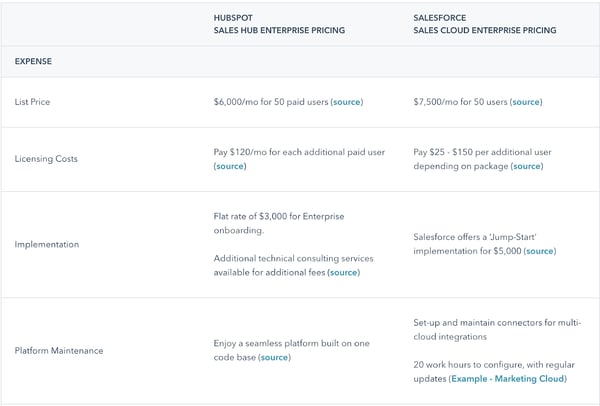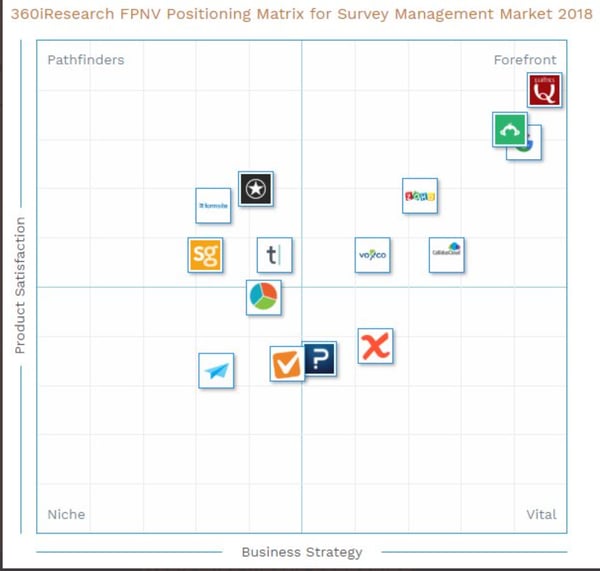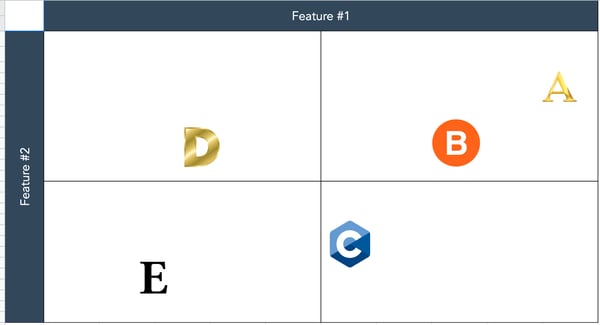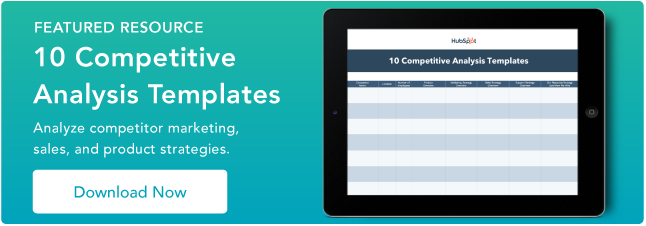- Like
- SHARE
- Digg
- Del
- Tumblr
- VKontakte
- Flattr
- Buffer
- Love This
- Save
- Odnoklassniki
- Meneame
- Blogger
- Amazon
- Yahoo Mail
- Gmail
- AOL
- Newsvine
- HackerNews
- Evernote
- MySpace
- Mail.ru
- Viadeo
- Line
- Comments
- Yummly
- SMS
- Viber
- Telegram
- JOIN
- Skype
- Facebook Messenger
- Kakao
- LiveJournal
- Yammer
- Edgar
- Fintel
- Mix
- Instapaper
- Copy Link
Have you ever been playing a game with your loved ones and you have to look around to suss out the competition?
Whether you currently own or you’ re looking to start your own business, you need to do the same thing.
A competitive analysis will help you identify your competitors and research their products, sales, and marketing strategies. By doing this, you’ ll learn your place in the market, how to differentiate yourself from your competition, and how to improve on their processes.
Below, let’ s learn what a competitive matrix is, and review some templates and examples.
What is a Competitive Matrix?
A competitive matrix is a way to visualize your competitive analysis. There are different kinds of competitive matrices that you can use to compare yourself to your competitors. You can use a competitive matrix to identify strengths, weaknesses, opportunities, or threats to your company.
Before you dive into the world of competitive matrices, it’ s important to understand that there are different types that you can use to compare your company to your competitors:
- Features and benefits analysis
- SWOT analysis
- Competitive strategic overview
- Content marketing strategies
- Review tracking
Essentially, you can use a competitive matrix to compare any characteristics of your company with a competitor.
Sometimes these matrices will be more visual in nature (a plotted graph), but sometimes it’ s just an excel doc with the information listed in columns.
The goal of the competitive matrix is to be able to see at a glance the competitive landscape and your position in the marketplace. This will help you see gaps in the marketplace and hone in on your unique value proposition.
Perhaps, after looking at a competitive matrix, you brainstorm new product ideas, or new tools or features that you hadn’ t considered before. Or maybe you come out of it with a ton of ideas on how to improve your content marketing strategy.
Regardless, you can use a competitive matrix for a lot of reasons. You can use it to develop new ideas, or you can use it to train sales staff on how to differentiate your company from the competition.
After figuring out what you’ re going to do with the information, make sure you write down your ideas, develop KPIs, and regularly conduct this analysis so you can stay up to date with your strategy.
Now that you know what a competitive matrix is and how to use one, let’s review some templates that you can use for your own strategy.
Competitive Matrix Templates
1. Two-Feature Competitive Landscape Chart
One type of competitive matrix you can do is a simple comparison of features. You can use this information to plot where your company is compared to competitors.
The features could be something like price or customization potential. Then, you’ d place the logos of each company (including yours) on the graph depending on how well a company executes a certain feature. The point of this matrix is to visualize who does what better, so you can see what you have to work on and how to differentiate yourself against the competition.
2. Content Marketing Analysis Template
As a content marketer, this is my favorite template. With this template, you can compare social media followers, blog strategy, email strategy, SEO, etc. This will help you decide where you need to focus your content strategy — should you place an emphasis on Twitter, rather than Facebook? If you download this template, it also includes a graph and more strategies to analyze.
3. SWOT Analysis Template
A basic competitive matrix is the SWOT analysis. Conducting a SWOT analysis will help you identify areas where you could improve. You should conduct a SWOT analysis for yourself, but also for your competition. Knowing what weaknesses your competition has will help your sales reps and help you make improvements in those areas.
4. Review Tracker
A review tracker matrix will help you see at a glance the types of reviews you get versus your competitors. It’ s important not to forget about reviews because they can have a big impact on a business. With this template, you can also use a scoring system to normalize the averages.
After reviewing those templates, it’ s time to see what a competitive matrix looks like in action. Let’ s see some examples below.
Competitive Matrix Examples
1. HubSpot
This is a public HubSpot competitive matrix comparing the overall pricing of our CRM versus Salesforce. This is a standard matrix that’s meant to help people see the difference between the CRMs at a glance.

2. SugarSync
This is a great example of what a feature matrix might look like. SugarSync compares its feature offerings against the competition in an easy-to-understand visualization.

3. 360iResearch
In this example, 360iResearch reports on survey management software. This is a plotted graph showing which companies have the best product satisfaction and business strategy.

Competitive matrices are great tools to help you uncover how you’ re different from your competitors. You can learn your unique value proposition and identify areas for improvement.
Originally published Mar 5, 2021 7:00:00 AM, updated March 05 2021
![the-beginner’s-guide-to-the-competitive-matrix-[template]](https://everythingflex.com/wp-content/uploads/2021/03/7996-the-beginners-guide-to-the-competitive-matrix-template.jpg-23keepProtocol)
![Access Now: 10 Competitive Analysis Tempates [Free Download]](https://no-cache.hubspot.com/cta/default/53/b3ec18aa-f4b2-45e9-851f-6d359263e671.png)






